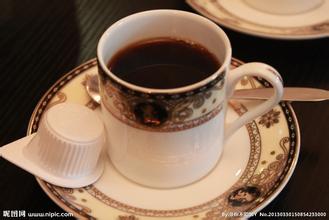Introduction to the description of the Flavor Manor of High-quality Coffee beans in Mexico Coffee Variety producing area
The Teotihuacan civilization (Teotihuac á n) began around 200 BC, about in the middle of what is now Mexico, and was born after the demise of the Olmec civilization, about the same time as the Mayan civilization. the Teotihuacan people built a city of about 50,000 people between the first year of AD and 150, making it the earliest urban settlement in the whole American region, with many pyramids. However, unlike the genealogical context of other ancient Indian civilizations, the origin of the Teotihuacans is still an unsolved mystery, and no one can confirm that the civilization had written and documented it. Today, we know about the existence of this civilization, not only because they have left behind huge relics for analysis and proof, but also because some other surrounding civilizations of their time mentioned things about the Teotihuacans in their books or paintings. it's another key to reference. The Teotihuacans did not call themselves by this name, which was used by the Toltec, a successor civilization that existed in the region after the demise of the civilization, to call their predecessors the Nahuatl (a native Indian language of central Mexico), meaning "the land of man made by the gods". Although the ancient civilization disappeared long ago in the Toltek and even in the later Aztec era, they still regarded the ancient city where the Teotihuacan once lived as a shrine, hence the name.
Mexican coffee-growing areas are mainly concentrated in the southeastern highlands, near Guatemala. Most of the mountains in the south are volcanic areas, and the volcanic ash soil is not only conducive to the drainage of coffee roots, but also provides sufficient nutrients for the growth of coffee trees. Most of the coffee varieties planted are Kaddura, Tibica, bourbon, etc., and the treatment methods are mostly water washing treatment, which are classified according to altitude.
Coffee beans are mainly exported to the United States, and about 70% of the coffee is exported directly to the United States, which is used as a large amount of industrial beans, making it a coffee plantation in the United States. However, Mexico's annual output is not proportional to its position in the coffee world. Although the output is large, there is a lack of some representative boutique coffee with outstanding quality. So when it comes to the level of understanding of Mexican coffee, most people, including myself, will feel relatively strange. When we taste and discuss beans from excellent producing areas of various countries, Mexican coffee exists awkwardly like an outsider.
But with a climate suitable for coffee growth, excellent coffee varieties, good soil and high-altitude planting areas, why is the quality of Mexican coffee not satisfactory?
A few days ago, when I went to Mexico, some colleagues jokingly called Mexico popcorn coffee. The quality of the raw beans exported by Mexico was not good, and the raw beans bought were sometimes mixed with a little corn and sand. If the corn is not picked clean and mixed with raw beans into the roaster, it will really become popcorn. But now the quality of raw beans exported from Mexico has been greatly improved, and the mixing of corn kernels has been a story for many years. Corn was cultivated by the ancient Indians of Mexico, so Mexico is known as the "hometown of corn", and corn is also the main crop in Mexico. Coffee in the drying process is not fine enough to mix with corn kernels. This explains why corn is mixed with corn. From this matter, it is not difficult to find that the root cause of the unsatisfactory overall quality of Mexican coffee lies in the follow-up production processing. From the harvest, processing, grading, packaging and transportation of coffee fruits, unreasonable operation will lead to the loss of good flavor.
For Mexican coffee, of course, we can not ignore the existence of high-quality coffee, many coffee farms are constantly improving their own planting, harvesting, and processing technology. I drank this Mexican, ground dry aroma with refreshing herbal and nutty aromas. It has a medium mellow thickness, low acidity, sweet and sour red berries, smooth, clean and mild taste and a long finish. Generally speaking, Mexican coffee is worth a try. I also believe that the quality of Mexican coffee will become better and better with the improvement of local production technology.

Important Notice :
前街咖啡 FrontStreet Coffee has moved to new addredd:
FrontStreet Coffee Address: 315,Donghua East Road,GuangZhou
Tel:020 38364473
- Prev

Costa Rican Yerzaro Coffee Flavor description introduction of fine coffee beans in the producing area
All the coffee trees planted in Costa Rica are Arabica coffee trees. through improvement, the quality of coffee beans is better and more stable. in order to facilitate picking, coffee trees are kept at a height of about 2 meters through continuous pruning. The coffee that people eat is the taste of the seeds in the fruit that are brewed in water. After picking raw coffee beans, the peel, pulp, seed film and sun exposure must be removed.
- Next

Introduction to the description of the flavor of high-quality coffee beans in Dominica coffee producing areas with intertwined aftertaste
The earliest coffee in Dominica was introduced from Martinique (the overseas province of France), dating back to the early 18th century. Dominica is an island country with a tropical climate. The temperature changes little throughout the year. Except for the lower temperature in the Central Cordillera Mountains, which can reach less than 0 ℃ in winter, the annual average temperature in other areas is between 25 and 30 ℃, which is affected by the mountain topography.
Related
- Detailed explanation of Jadeite planting Land in Panamanian Jadeite Manor introduction to the grading system of Jadeite competitive bidding, Red bid, Green bid and Rose Summer
- Story of Coffee planting in Brenka region of Costa Rica Stonehenge Manor anaerobic heavy honey treatment of flavor mouth
- What's on the barrel of Blue Mountain Coffee beans?
- Can American coffee also pull flowers? How to use hot American style to pull out a good-looking pattern?
- Can you make a cold extract with coffee beans? What is the right proportion for cold-extracted coffee formula?
- Indonesian PWN Gold Mandrine Coffee Origin Features Flavor How to Chong? Mandolin coffee is American.
- A brief introduction to the flavor characteristics of Brazilian yellow bourbon coffee beans
- What is the effect of different water quality on the flavor of cold-extracted coffee? What kind of water is best for brewing coffee?
- Why do you think of Rose Summer whenever you mention Panamanian coffee?
- Introduction to the characteristics of authentic blue mountain coffee bean producing areas? What is the CIB Coffee Authority in Jamaica?

